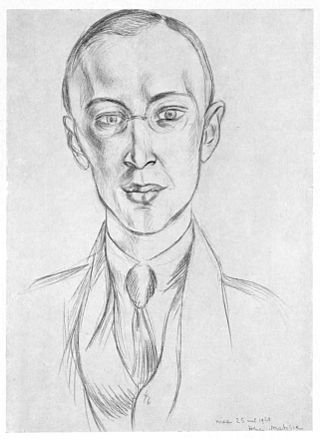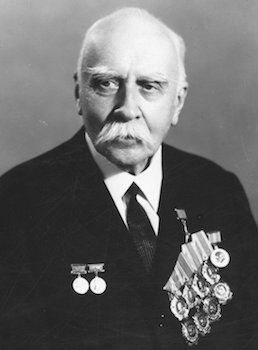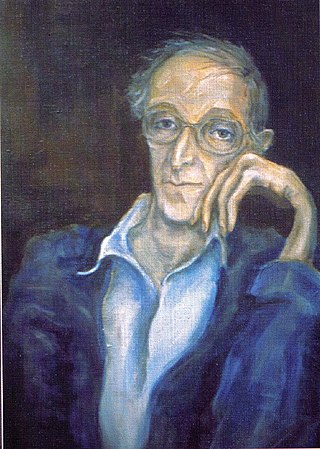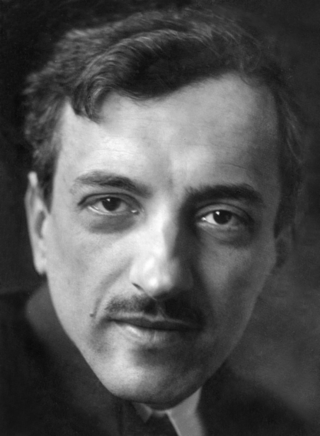External links
- Symphony No. 11 (Myaskovsky) : Scores at the International Music Score Library Project (available in Canada only at this time.)
The Russian composer Nikolai Myaskovsky wrote his Symphony No. 11 in B-flat minor in 1931/1932.
It has three movements:
The symphony (his opus 34) was begun three years after his 10th symphony was completed, a symphonic pause long for him. The style of this symphony is entirely different from that of its predecessor, which was still a modern-sounding work. Symphony No. 11 sounds much more conservative. That is probably a consequence of the changing art climate in the Soviet Union, although the failure of the demanding 10th Symphony, poorly-performed by the conductorless orchestra Persimfans at its premiere, may also have contributed to his adoption of a less-advanced style.
Too modern art began to be considered "formalistic", and artists were brought together under one aegis. Another cause is possible, according to some Soviet musicologists – that Myaskovsky and others had to leave the poorly functioning Association for Contemporary Music. The work's premiere was also delayed until two years after completion. By then Myaskovsky had already tinkered with/revised the symphony. A musical pointer in this symphony is two fragments in movement 2, where woodwinds turn and turn again around a fugal motif.
The work was dedicated to Maximilian Steinberg, whose third symphony and a symphonic poem, Prinses Marlene, had earlier been converted by Myaskovsky into piano reduction.
The symphony was premiered on 16 January 1933 in Moscow, conducted by Konstantin Saradzhev.

The Piano Quintet in G minor, Op. 57, is a five-movement composition for two violins, viola, cello, and piano by Dmitri Shostakovich. He composed it between July 13 and September 14, 1940. Sources conflict on where he began to compose it—the location is variously stated to be Shalovo, Kellomäki, or Moscow—but most agree that it was completed in Leningrad. It is the second of Shostakovich's two attempts at composing a piano quintet. His first dated from his student years, but was ultimately abandoned and repurposed in other compositions.
Dmitri Shostakovich composed his Symphony No. 4 in C minor, Op. 43, between September 1935 and May 1936, after abandoning some preliminary sketch material. In January 1936, halfway through this period, Pravda—under direct orders from Joseph Stalin—published an editorial "Muddle Instead of Music" that denounced the composer and targeted his opera Lady Macbeth of Mtsensk. Despite this attack and the political climate of the time, Shostakovich completed the symphony and planned its premiere for December 1936 in Leningrad. After rehearsals began, the orchestra's management cancelled the performance, offering a statement that Shostakovich had withdrawn the work. He may have agreed to withdraw it to relieve orchestra officials of responsibility. The symphony was premiered on 30 December 1961 by the Moscow Philharmonic Orchestra led by Kirill Kondrashin.

Reinhold Moritzevich Glière, born Reinhold Ernest Glier, was a Russian and Soviet composer of German and Polish descent. He was awarded the title of People's Artist of RSFSR (1935) and People's Artist of USSR (1938).
Symphony No. 12 in D minor, Op. 112, titled The Year 1917, was composed by Dmitri Shostakovich in 1961. He dedicated it to the memory of Vladimir Lenin. Although the performance on October 1, 1961, by the Leningrad Philharmonic Orchestra conducted by Yevgeny Mravinsky was billed as the official premiere, the actual first performance took place two hours earlier that same day in Kuybyshev by the Kuybyshev State Philharmonic Orchestra conducted by Abram Stasevich.

Ludwig van Beethoven's Symphony No. 1 in C major, Op. 21, was dedicated to Baron Gottfried van Swieten, an early patron of the composer. The piece was published in 1801 by Hoffmeister & Kühnel of Leipzig. It is not known exactly when Beethoven finished writing this work, but sketches of the finale were found to be from 1795.
The Violin Concerto No. 1 in A minor, Op. 77, was originally composed by Dmitri Shostakovich in 1947–48. He was still working on the piece at the time of the Zhdanov Doctrine, and it could not be performed in the period following the composer's denunciation. In the time between the work's initial completion and the first performance, the composer, sometimes with the collaboration of its dedicatee, David Oistrakh, worked on several revisions. The concerto was finally premiered by the Leningrad Philharmonic under Yevgeny Mravinsky on 29 October 1955. It was well-received, Oistrakh remarking on the "depth of its artistic content" and describing the violin part as a "pithy 'Shakespearian' role."

Sergei Prokofiev wrote his Symphony No. 3 in C minor, Op. 44, in 1928.

Sergei Prokofiev's Symphony No. 4 is actually two works, both using material created for The Prodigal Son ballet. The first, Op. 47, was completed in 1930 and premiered that November; it lasts about 22 minutes. The second, Op. 112, is too different to be termed a "revision"; made in 1947, it is about 37 minutes long, differs stylistically from the earlier work, reflecting a new context, and differs formally as well in its grander instrumentation.

Nikolai Yakovlevich Myaskovsky, was a Russian and Soviet composer. He is sometimes referred to as the "Father of the Soviet Symphony". Myaskovsky was awarded the Stalin Prize five times.

Levko Mykolaiovych Revutsky was a Soviet and Ukrainian composer, pedagogue, and public figure.

The Symphony No. 6 in E-flat minor, Op. 111, by Sergei Prokofiev was completed and premiered in 1947. Sketches for the symphony exist as early as from June 1945; Prokofiev had reportedly begun work on it prior to composing his Fifth Symphony. He later remarked that the Sixth memorialized the victims of the Great Patriotic War.

The Symphony No. 1 in B♭ major, Op. 38, also known as the Spring Symphony, is the first completed symphonic work composed by Robert Schumann.

Aleksandr Lazarevich Lokshin (1920–1987) was a Soviet composer of classical music. He was born on 19 September 1920 in the town of Biysk, in the Altai Region, Western Siberia, and died in Moscow on 11 June 1987.

Maximilian Osseyevich Steinberg was a Russian composer of classical music.
Sergei Prokofiev's String Quartet No. 2 in F Major, Op. 92 (1941) was first performed by the Beethoven Quartet in Moscow on 7 April 1942. A later concert in Moscow, on 5 September 1942, was delayed by a Nazi air raid and started late. Prokofiev thought it "an extremely turbulent success." The string quartet, lasting for 20–25 minutes, is in three movements.

Pyotr Ilyich Tchaikovsky's Piano Concerto No. 3 in E-flat major was at first conceived by him as a symphony in the same key. But he abandoned that idea, jetisoned all but the planned first movement, and reworked this in 1893 as a one-movement Allegro brillante for piano and orchestra. His last completed work, it was duly published as Opus 75 the next year, after he died, but given by publisher Jurgenson the title "Concerto No. 3 pour Piano avec accompagnement d'Orchestre".
The Symphony No. 1 in C minor, Op. 3, by Nikolai Myaskovsky was written in 1908.
Nikolai Myaskovsky's Symphony No. 5 in D Major, Op. 18, was written in 1918. It was premiered on 18 August 1920 by the conductor Nikolai Malko.
The Symphony No. 3 in B minor by the Ukrainian composer Borys Lyatoshynsky was completed in 1951, with the final movement themed "Peace will conquer war." The symphony was first performed in Kyiv on 23 October 1951, by the Kyiv Philharmonic, conducted by Natan Rakhlin. Criticised by the Soviet authorities on ideological grounds, the composer was forced to rework the symphony, and to remove the subtitle of the finale. The first performance of the revised version took place in Leningrad in 1955.

The Symphony No. 2 in B minor is a symphony by the Ukrainian composer Borys Lyatoshynsky. It has three movements.